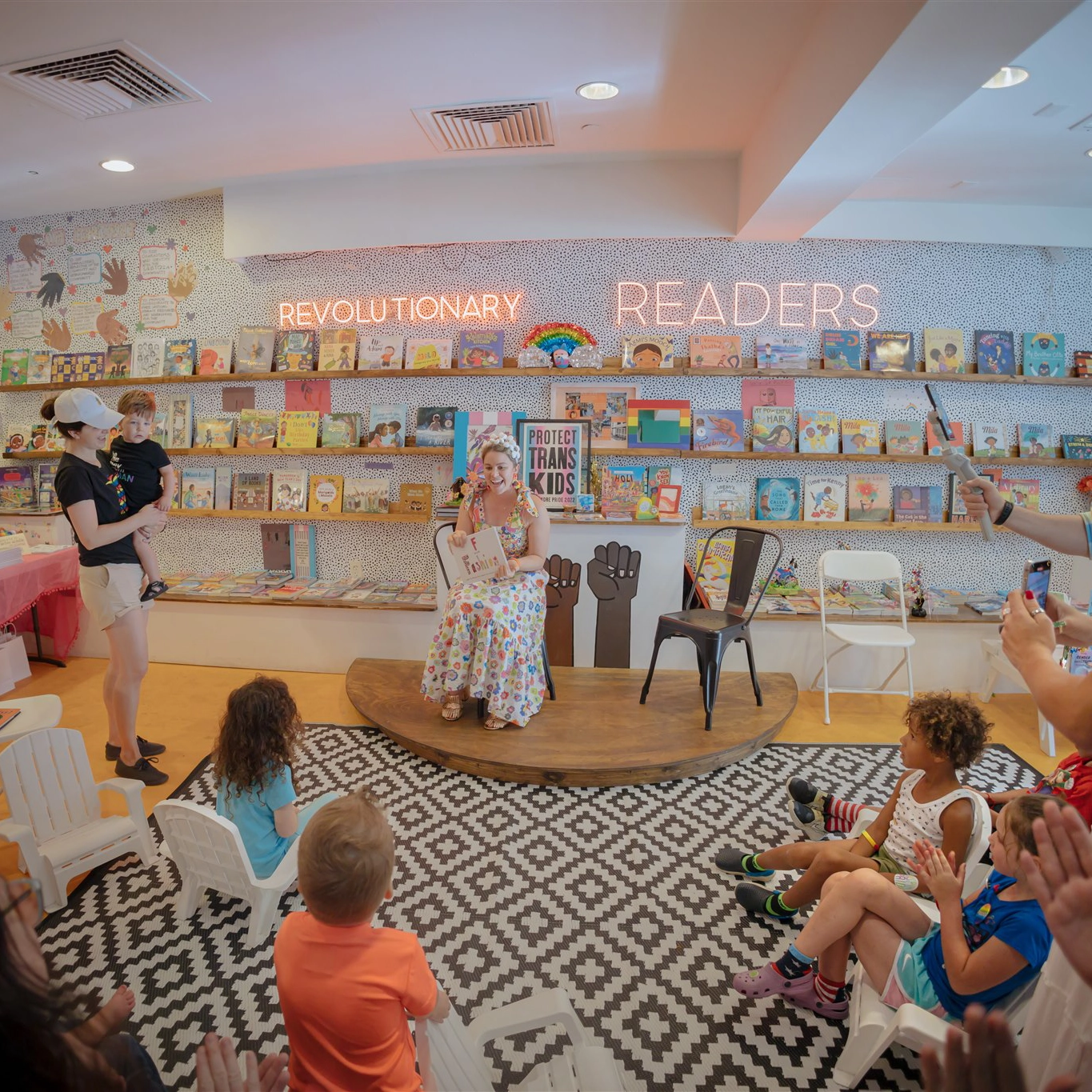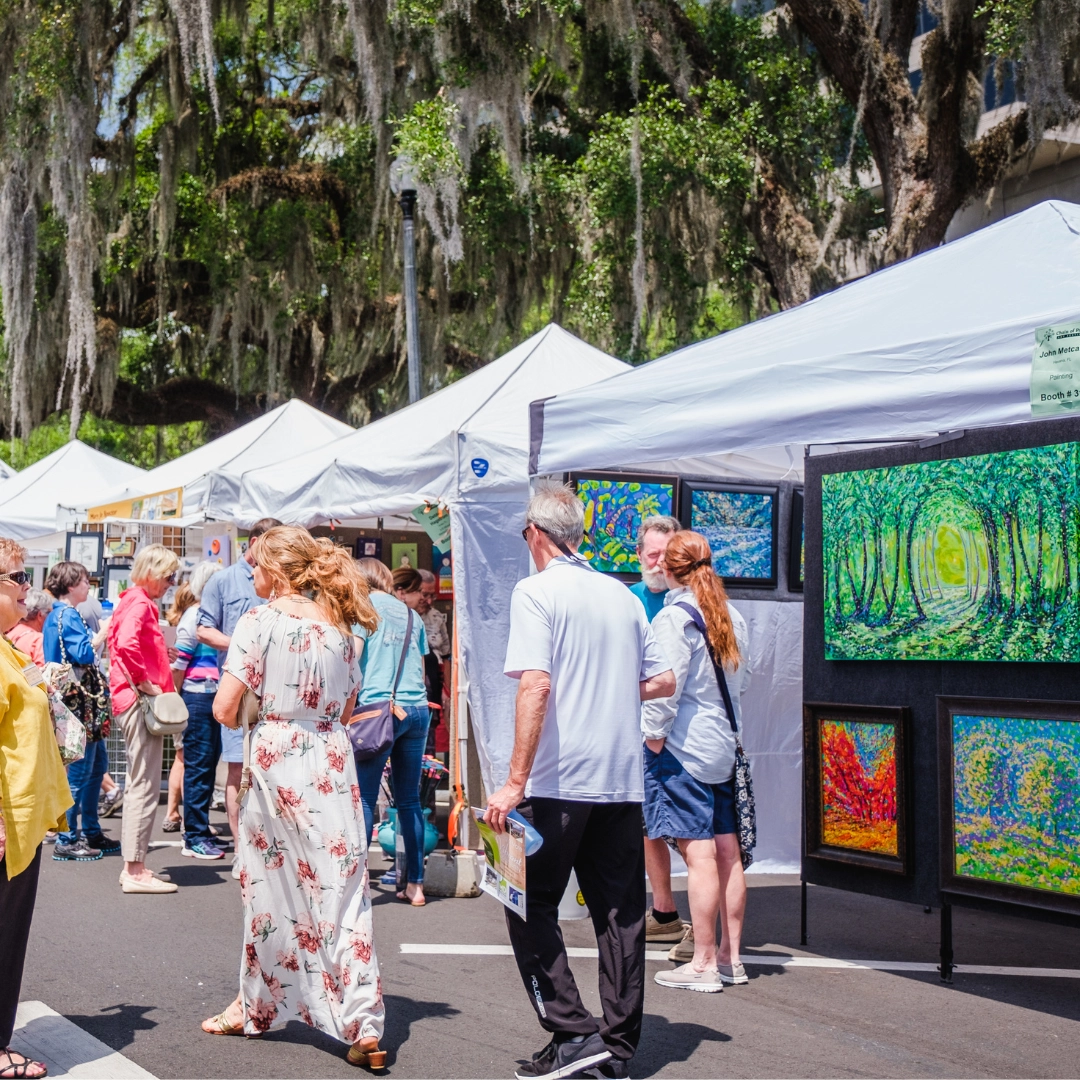by Katie Hendrick | August 23, 2017
Gone Coastal: The Music Inspired by Jimmy Buffett
In the 1970s, a move to Key West inspired an aspiring country singer to create a new brand of laid-back music about life on the sea and in the bar. Over the years, Jimmy Buffett’s tales of the good life have enraptured millions, influenced a new crop of tropical troubadours and even invaded Nashville’s traditional turf.

Earlier this year, on the Friday before Memorial Day, holiday revelers crowded onto the back patio at Caddy’s, a beachfront bar on Treasure Island, where they enjoyed fruity cocktails, a majestic sunset and a soundtrack that perfectly summarized the lighthearted atmosphere.
“Out here off the shoreline, the master plan is fate.
The mermaids must have music, songs for evening’s sake.”
After kicking off the performance with “Shoreline,” his biggest hit, singer-songwriter John Frinzi helped the crowd unwind with upbeat melodies extolling the beauty of the sand and sea, each punctuated by the reverberations of percussionist John Patti’s steel drums. For hours, the two artists, both of whom perform on Radio Margaritaville, entertained an audience of preschoolers, silver foxes and everyone in between, all dancing and singing along.

As the night wound down, the duo transitioned from original material to covers. In a tribute to the man who had paved the way for both their careers, they performed Jimmy Buffett’s 1974 “The Wino and I Know,” one of the prolific musician’s more obscure works:
“It’s a strange situation, a wild occupation,
Living my life like a song.”
Artists inspired by Buffett, along with a few of his friends, chatted with Flamingo about the maestro’s influence and the wild and wonderful rise of tropical music.
COMPASSES COME IN UNUSUAL FORMS
In October 1971, following a disappointing attempt to break into Nashville’s country music scene, Jimmy Buffett, the 24-year-old aspiring singer-songwriter from Mobile, Alabama, heeded the advice of an acquaintance, Jerry Jeff Walker of “Mr. Bojangles” fame, who had suggested he check out the Flick, an unassuming music hall in Coconut Grove that had previously helped launch the careers of Joni Mitchell and John Denver. Walker and his girlfriend, Murph, lived nearby and had invited Buffett to crash with them anytime. Before he left Nashville, Buffett had booked a gig, but when he showed up the day after arriving in Miami, the club’s owner, Warren Dirken, insisted that Buffett had the wrong date and told him to come back in two weeks. Not the least perturbed by their guest’s extended visit, Walker and Murph decided to give Buffett a proper Florida orientation during his downtime. They loaded into the Flying Lady, Walker’s 1947 Packard sedan, and drove to their stomping grounds in Key West.
Stay at the Pier House Resort in Key West, home to the Chart Room, where Jimmy got his start.

Their first stop: the Chart Room, where Tom Corcoran, an old friend of Walker’s, was tending bar. “That day, there were no hints of the superstar he would become,” recalls Corcoran, now a novelist living in Lakeland. “He walked in trailing Jerry Jeff Walker and Murphy. He was just an appendage there.” Corcoran offered the young man a drink. “He looked around to see what others were having and settled on a Heineken.”
That timidity didn’t stick. After his performance at the Flick, Buffett promptly moved to the island. Once he settled in, he asked to play at the Chart Room in return for booze. Corcoran agreed to the deal—he liked Buffett’s vibe. As it turned out, so did the bar’s patrons. Emboldened by their applause, Buffett began eyeing top-shelf liquor.
Even in the early days, Buffett displayed exceptional business acumen. The Chart Room, Corcoran says, was a wise choice of venue. The bar, a converted hotel room with only six barstools and three tables, catered to local politicians, who received every third drink for free. “Jimmy knew the power of this play,” Corcoran says. “He slapped a bumper sticker on his guitar case that read ‘Support Your Local Sheriff’ in red, white and blue. So the sheriff actually became a fan.” In time, the sheriff’s soft spot for the musician would lead him to turn a blind eye to the mischief that inspired much of Buffett’s early work.
Like what you read? Click here to subscribe.
In his new town, Buffett quickly fell in with a boisterous tribe that included Corcoran; the saltwater sportsman and fishing writer Guy de la Valdene; the authors Jim Harrison and Thomas McGuane, Buffett’s future brother-in-law; and the painter Russell Chatham. They called themselves Club Mandible—a “totally nonsensical name,” Corcoran says—and made it their mission to enjoy island living to the fullest. During their escapades in boats and bars around the Keys, they encountered a host of characters, including shrimpers, smugglers and a nine-fingered piano player.
Enchanted with the awe-inspiring natural beauty of the islands, Buffett started writing tunes like “I Have Found Me a Home,” a sonnet for Key West; “Grapefruit—Juicy Fruit,” a ditty about drinking and flirting; and “Cuban Crime of Passion,” a fictional account, co-written with Corcoran, of an ill-fated love triangle. He packaged the songs in the 1973 album A White Sport Coat and a Pink Crustacean, giving the world its first taste of a new genre. The music was soon dubbed “gulf and western.” It was a riff on the name of a major apparel and entertainment conglomerate, but it was also an apt description of a musician who combined country, rock and pop with stories about sailing, fishing and gallivanting in the Gulf of Mexico, a style that would only become more distinctive—and popular.
“There’s no doubt that Buffett had great talent, but, in order to stand out as a performer, he needed to find his muse,” says William McKeen, the author of Mile Marker Zero: The Moveable Feast of Key West. McKeen is also the former chair of the University of Florida College of Journalism and Communications, where he taught rock ’n’ roll history for 24 years. “Key West served that purpose.”
Gulf & Western music festivals around the state.
QUIETLY MAKING NOISE

As Buffett worked and played in the Florida sun, producing a new album almost every year, his music began to have a ripple effect 1,500 miles north, where a preteen Frinzi was performing in local bands, searching for his niche. Born into a family of music lovers, he’d cut his teeth on jazz, blues and big band—his father’s favorites—and folk and rock, his brothers’ preferences. But when his oldest brother, Mike, made him a mixtape of Buffett ballads, he found his passion.
Buffett became the soundtrack of his teenage years and his twenties. “I was in my green ’74 [Chevrolet] Nova. I remember listening to [Buffett] on the way to high school. I didn’t quite understand it at the time, but I think it was an escapist thing. I spent time on the Jersey Shore, but not the Keys or the Caribbean, so hearing about these wonderful places, these wild songs about Key West, it was exciting,” Frinzi recalls.
Rhythmically, Buffett meshed with other artists Frinzi appreciated, like Jackson Brown, James Taylor and the Eagles, but, lyrically, he presented something totally different. “For him, he was writing about what he was living. For me, it was like, ‘That sounds like a cool place to be,’” he says. Eager to take friends and family along for a virtual vacation, Frinzi did Buffett covers before it was de rigueur for anyone who wanted to sing at a bar.
In 2003, after spending more than 20 years studying the master’s storytelling, Frinzi, then in his mid-thirties, broke into Buffett’s inner circle. The fledgling artist had sent demos to a handful of companies, expecting to be blown off by all of them, but one day Doyle Grisham, the pedal steel guitarist in Buffett’s Coral Reefer Band, reached out. The pair subsequently recorded “Into the Dawn together.” “At first I thought it was one of my friends pranking me,” Frinzi says of that first phone call from Grisham. “Doyle was my first choice, but I was sure he was out of my league.”
Frinzi soon emerged as a top talent in the gulf and western world and received invites to marquee events, such as the Key West Songwriters Festival and the Meeting of the Minds, an annual convention for Buffett fanatics. He has performed with nearly every Coral Reefer. In 2007, he finally escaped New England winters, moving to Lakeland, whose central location makes it perfect for a traveling musician. Shortly after settling in, he bumped into Tom Corcoran in a Publix checkout line. The two have since co-written several songs, including “Shoreline.”
CHANGING CHANNELS
In the ’80s, the gulf began to overtake the western in Buffett’s music. With the addition of the Trinidadian steel drum player Robert Greenidge, the Coral Reefer Band acquired an island flavor that matched Buffett’s lyrics. The change “really distinguished his sound,” explains John Patti, 34. The Sarasota-based steel drum player has recorded three albums and played at sporting events and concerts before thousands of people. He credits Buffett for popularizing his once-obscure instrument.
Patti discovered steel drums at age 9 during a trip to Sesame Place, a Pennsylvania theme park based on the PBS children’s show. The park had a set fashioned to look like Oscar the Grouch’s trash cans, which kids could bang with abandon. His first strike of the mallet produced a “hypnotic, happy sound,” Patti recalls. His parents bought him his own drums, but they couldn’t find anyone in their hometown of Baltimore who could teach him to play, so they turned to their extensive collection of Buffett albums. “I listened to his songs over and over again and tried to play along,” Patti says. “Eventually, I got the rhythm down.”

The self-taught musician’s skills eventually earned him a scholarship to West Virginia University. Even before that, however, Patti’s sound made him famous in the Parrot Head community, a worldwide network of Buffett fans. At a 1998 fundraiser concert hosted by his local Parrot Head club, Patti’s high school band opened for A1A, an acclaimed Buffett cover band. Patti hung around after the show to jam, and, a few months later, A1A asked him to play at the Meeting of the Minds. He accepted the invitation and, at age 16, appeared on stage with the Coral Reefers in front of 3,500 people. Years later, he played with Frinzi at the Meeting of the Minds. Now that they both live in Florida, they book gigs together.
Performing with the Coral Reefers definitely ranks among Patti’s most surreal moments, but he has an even harder time believing he’s made a career out of his hobby. “Nowadays, everyone loves that Florida island lifestyle, which, fortunately for me, allowed me to fall into a career. I have degrees in marketing and logistics, and I fully intended to use them,” he says.
EVERYBODY’S GOT A COUSIN IN MARGARITAVILLE
Buffett’s rise from bar busker to cultural icon took an unusual trajectory.
“He [built] a solid fan base by appearing in concert. He had remarkably little airplay, perhaps because DJs didn’t know how to classify him,” says Steve Huntington, who worked at Sarasota’s WQSR-FM, one of the few radio stations that featured Buffett in their regular rotations in the 1970s. In 1998, Buffett, still grateful for the early support, asked Huntington to help launch Radio Margaritaville, a 24/7 Internet station created to meet the demand for Buffett’s musical style.

The station was acquired by Sirius Satellite Radio, now known as SiriusXM, in 2005. Today, it continues to give gulf and western artists national exposure. “I don’t know where I’d be without Radio Margaritaville,” says Frinzi. He frequently spots Huntington at his shows.
Camaraderie runs deep among musicians, says Patti. The drummer has made connections with seasoned pros like Frinzi, Orlando’s Jimi Pappas and James “Sunny Jim” White of Osprey. “They’re great mentors who enjoy seeing their friends in this business succeed,” he says.
The musicians are also grateful for the loyalty of the Parrot Heads, who often open their homes to performers. In his 30-plus years in the business, White, 60, has lost count of the number of backyards and living rooms he’s played in. “House concerts are the best way to experience music. It’s a close, intimate environment,” he says. Parrot Heads, he adds, “are great fans. They’re not looking at a TV or playing with their phones. They tune in, buy our albums and tell their friends about us.”
Read about Buffett’s influence on country music.
CHEESEBURGER IN PARADISE
Huntington expects the ranks of gulf and western artists to continue growing. “Buffett’s lyrics and melodies are built on some universal truths,” he says. “Whoever you are, wherever you’re from, whatever your job is, you can’t go at full speed all the time. People want to be warm, sipping a refreshing beverage—whether it has an umbrella in it or not. If they can’t be there in person, they can experience it through [Buffett’s] music.”

Buffett’s collaboration with mainstream country stars has fueled gulf and western’s popularity. In 2003, “It’s Five O’Clock Somewhere,” a duet with Alan Jackson, won the Country Music Association’s award for musical event of the year and was named the Academy of Country Music’s single of the year. The following year, he released License to Chill, a 16-track album featuring notable country singers. In 2006, he was inducted into the Nashville Songwriters Hall of Fame.
“He’d never come out and say it, but it must be immensely satisfying to be successful in the community that originally rejected him,” says Corcoran. He’s relieved his friend finally landed in the annals of country greats, but he’s even happier that Buffett took a detour via A1A on his way there.





